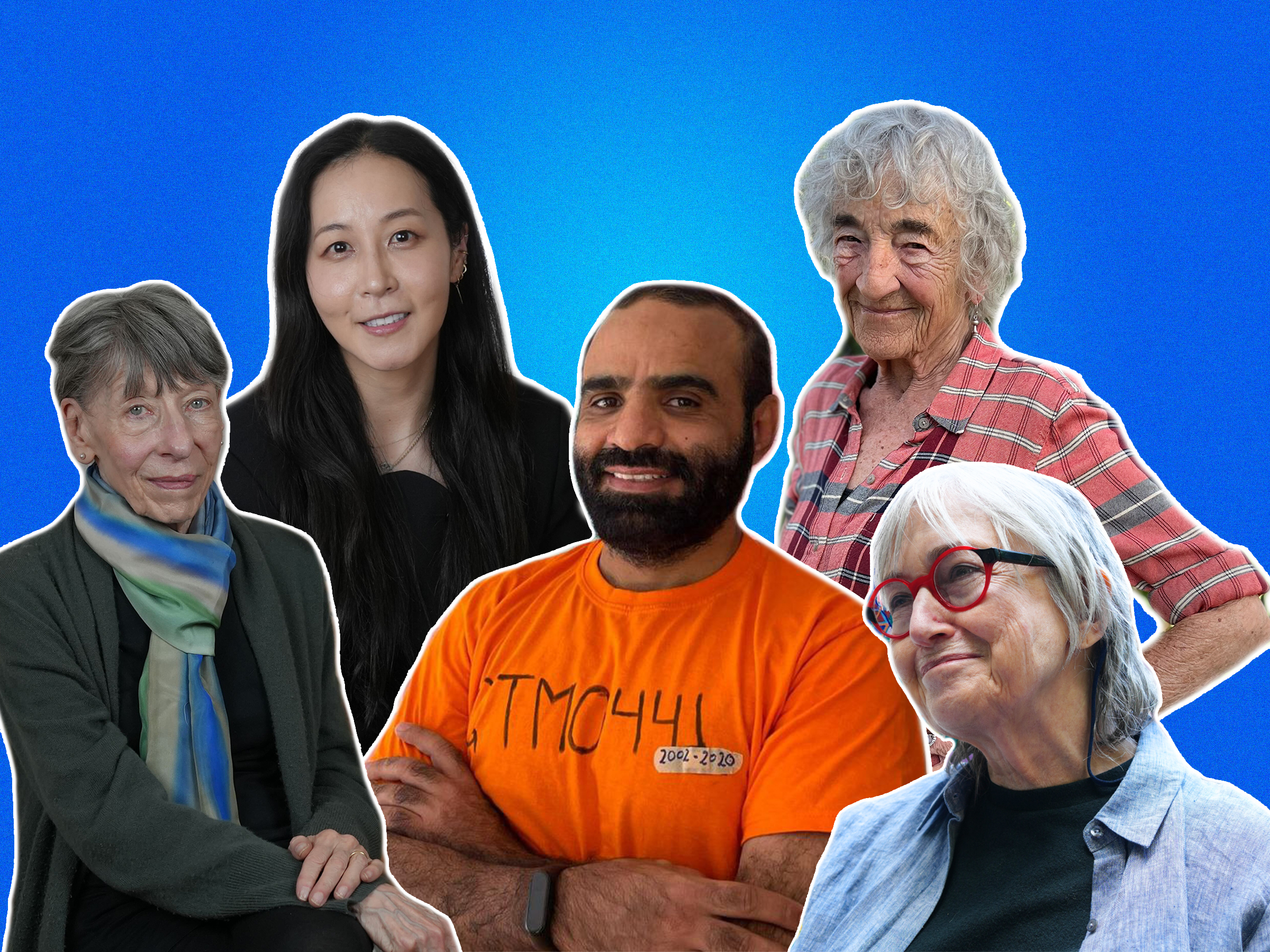“In 1970, I became involved with the feminist art movement. It made me rethink everything, from my personal relationships…[to] how I see myself and my peers.
We formed this group called the Los Angeles Council of Women Artists and we protested at the county museum. We went in and we counted the works in the permanent collection [of the LA County Museum of Art] and there was only one by a woman…And then we went in the library and we looked at the catalogs of the exhibitions and there had only been one by a woman. So it was very easy to make a list of demands. ”
— Joyce Kozloff, on the Hyperallergic podcast
As Media Producer of Hyperallergic, I’m honored to edit interviews with the brightest minds in art for our podcast, from feminist legends like Joyce Kozloff and Lucy Lippard to author, activist, and former Guantánamo Bay detainee Mansoor Adayfi, who is working to recover paintings he made there from the infamous detention facility.
In the five episodes of the Hyperallergic podcast published beginning this fall, Editor-in-Chief Hrag Vartanian spoke with nine brilliant writers, artists, and thinkers who graciously offered critical perspectives on art, politics, feminism, and war.
Don’t forget that as of this year, we are also publishing these interviews on our YouTube channel. Most of these videos contain footage of the interviews, and all include visual references to the works of art mentioned in their conversations. We hope you enjoy them, and we can’t wait to share an exciting new season coming up in the first months of 2025.
—Isabella Segalovich, Media Producer
Lucy Lippard’s Life on the Frontlines of Art
Lucy Lippard, a giant of art history and criticism, allowed us into her world in Galisteo, New Mexico to learn about her trajectory from writing and protesting for equal representation of women and BIPOC artists in the bustling New York art world to hiking the dusty paths of the Southwestern desert.
Robber Barons, Marcel Duchamp, and Big Museums’ Dirty Little Secrets
Eunsong Kim, author of The Politics of Collecting: Race and the Aestheticization of Property (2024), blows preconceived notions of a democratic “marketplace of ideas” out of the water, demonstrating how union-busting industrialists invested in art devalued labor by prioritizing conceptual art like that of Marcel Duchamp over that which required painstaking craftwork. Today, we’re glad to see Kim’s volume will be receiving a second printing.
Guantánamo Bay and the Art of Resistance
While everyone is distracted by a $6.2 million banana, it’s easy to lose sight of the true potential of art. But we were lucky enough to speak to Mansoor Adayfi, who, after being imprisoned at Guantánamo Bay for almost 15 years without charge, speaks directly to how art was critical to helping him and other detainees hold on to their humanity. We also spoke with Hyperallergic contributor and art scholar Erin L. Thompson, who curated an exhibition of dozens of these incredible artworks, and artist Molly Crabapple, who was given rare access to Gitmo to draw pieces of that shadowy site, which probably won’t close anytime soon.
Karen Wilkin: Critiquing the New Masters
In this episode, Vartanian reunites with his college professor, Karen Wilkin, for a conversation about her masterful career in exhibition curation and writing, from her highly vexed relationship with critic Clement Greenberg to how studying ballet with George Balanchine informed her understanding of sculpture. She also lets us in on the story of how Greenberg bludgeoned a goose to death as a child, supposedly because it reminded him of his father. There’s quite a bit to unpack there, as you can imagine.
Joyce Kozloff’s Patterns of Resistance
One of the key founders of the feminist Pattern and Decoration movement, Joyce Kozloff was initially written off by figures like Greenberg for looking like “ladies’ embroidery” — as if that’s not art. But she was not only studying the art history of patterns intensely, but also living the rebellious politics of her aesthetics. In this episode, she also tells us about her lifetime of activism, from her time in the peace movements of the 1960s to feminist protests in the ‘70s and anti-war protests of this century.

